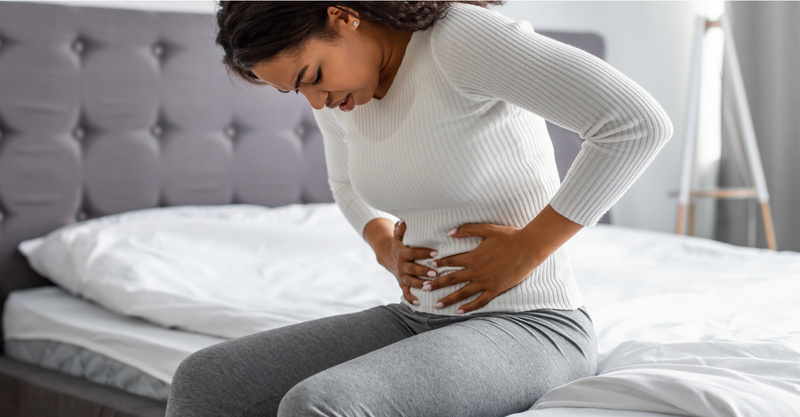Key Points
- Understand yeast infection causes and risk factors, such as antibiotics and hormonal changes.
- Learn about different types of yeast infections, like oral thrush and skin yeast infections.
- Explore urgent care options, over-the-counter medications, and the psychological impact of yeast infections.
Yeast infections (also called candidiasis) are fungal infections that often cause itching and burning around the vaginal area. They can be caused by a variety of factors, according to the Mayo Clinic. Such factors include:
- The use of antibiotics
- Hormonal changes
- Uncontrolled diabetes
- Lowered immune system
- Douching
Fortunately, most urgent care clinics offer treatment for yeast infections, so you can get relief from your symptoms and clear up the infection quickly.
Getting prompt treatment for your yeast infection is important because untreated yeast infections can cause severe health complications like invasive candidiasis (a yeast infection that spreads to the bloodstream and other areas of your body), according to the Cleveland Clinic.
Symptoms of Yeast Infection
Yeast infections often present with a range of symptoms. These symptoms, according to the Mayo Clinic, include:
- Itching and burning sensation inside or around the vagina
- Painful or uncomfortable sexual intercourse
- Discharge from the vagina (often reported as a thick, white, discharge that may resemble cottage cheese)
Causes and Risk Factors of Yeast Infection
Understanding the causes and risk factors for yeast infections can help you get faster treatment and take steps to prevent recurring infections. Common causes of yeast infections are outlined below, as reported by the Mayo Clinic and CDC.
Antibiotics
Antibiotics are used to kill bacteria that make you sick. They can also kill the good bacteria in your body that help keep yeast levels in check. When this happens, yeast can overgrow and cause an infection. If you have to take antibiotics, you should talk to your doctor about ways to prevent a yeast infection.
Sexual activity
Sexual activity can alter the delicate balance of natural bacteria in the vagina. When this happens, an overgrowth of yeast can occur. Sexual activity can also introduce fungus which can cause a yeast infection. Using condoms and practicing good hygiene can help reduce your risk of yeast infections.
Certain medical conditions
Some medical conditions, such as HIV/AIDS, can weaken the immune system and increase the risk of yeast infections. If you have a medical condition that affects your immune system, talk to your doctor about ways to prevent yeast infections.
Pregnancy
Pregnancy can cause hormonal changes that can increase the risk of getting a yeast infection.
Diabetes
According to the Cleveland Clinic, people with uncontrolled diabetes are more likely to get yeast infections because of the high sugar levels in their blood. Diabetes can also lower your immune system response to bacterial and fungal infections.
Use of birth control pills
Birth control pills can adjust your hormones, which can disrupt the balance of good bacteria in your body. This can increase the risk of yeast infections.
Types of Yeast Infections
Yeast infections are caused by an overgrowth of the fungus Candida. There are several types of yeast infections that can affect different parts of your body. Two common types of yeast infections, as outlined by Johns Hopkins are:
Oral Yeast Infection (Often Called “Thrush”)
An oral yeast infection, also called thrush, is a yeast infection that affects your mouth and throat. It is most common in babies, older adults, and people with weakened immune systems, according to the Cleveland Clinic. Symptoms of oral thrush include:
- White or yellow patches on the tongue, inner cheeks, or roof of the mouth
- Sore throat
- Difficulty swallowing
Good oral hygiene, such as brushing your teeth twice a day and flossing daily, can help prevent thrush. You should also avoid smoking and limit your intake of sugary foods and drinks, according to the Cleveland Clinic.
Skin Yeast Infections
Skin yeast infections, also known as “cutaneous candidiasis”, can affect various parts of your body. According to Johns Hopkins, skin yeast infections are the most common in skin folds, armpits, groin, and between the toes. Symptoms of skin yeast infections include a rash of red, itchy, and flaky skin.
Keeping your skin clean and dry, especially in areas that are prone to sweating, can help prevent skin yeast infections. You should also avoid wearing tight clothing and use mild soap when showering or bathing, according to the Mayo Clinic.
Common Misconceptions about Yeast Infections
Yeast infections are a common ailment that affects many people, especially women according to the Mayo Clinic. However, there are several misconceptions about yeast infections that can lead to confusion and misinformation. In this section, we will debunk some of the most common misconceptions, so you can make informed decisions regarding your health and well-being.
Misconception 1: Yeast Infections are Only a Women's Issue
While it is true that yeast infections are more common in women, men can also get yeast infections. In fact, men can get yeast infections in their genitals, mouth, and other areas of the body. It is important to recognize the symptoms of yeast infections in both men and women to prevent the spread of the infection.
Misconception 2: Yeast Infections are Caused by Poor Hygiene
Yeast infections are not caused by poor hygiene. While good hygiene can help prevent yeast infections, the infection is caused by an overgrowth of fungus in the body. Factors such as antibiotic use, pregnancy, diabetes, and a weakened immune system can all contribute to an overgrowth of yeast.
Misconception 3: Yeast Infections are a Sexually Transmitted Disease
Yeast infections are not considered sexually transmitted infections, according to the CDC. However, sexual activity can increase the risk of developing a yeast infection. It is important to practice safe sex to reduce the risk of any infection—including a yeast infection.
Misconception 4: Yeast Infections are Always Visible
Yeast infections can be internal or external. Internal yeast infections may be difficult or impossible to see. It is important to recognize the symptoms of both internal and external yeast infections to receive proper treatment.
Medical Tests for Yeast Infections
If you suspect that you have a yeast infection, it is important to get a proper diagnosis from a healthcare professional. Although many providers can diagnose a yeast infection based on symptoms and physical exams alone, there are medical tests available to help ensure a proper diagnosis. Two common medical tests used to diagnose yeast infections, according to the NLM, are:
- Vaginal swab - This test involves taking a sample of vaginal discharge to test for the presence of yeast. During the test, a healthcare professional will insert a swab into your vagina to collect a sample of discharge. The sample is then sent to a lab for analysis.
- Fungal culture test - This test is done by scrapping a small sample of skin cells from the affected area, and then examining the cells under a microscope.
Antifungal Medications Used to Treat Yeast Infections
If you have a yeast infection, your healthcare provider may prescribe antifungal medications to help treat the infection. Antifungal medications work by killing or inhibiting the growth of fungi (including yeast), according to the NLM. Two classes of antifungal medication include Azoles and Polyenes. Common medications that are used to treat yeast infections include:
- Fluconazole (Diflucan)
- Miconazole (Monistat)
- Clotrimazole (Lotrimin)
- Terconazole (Terazol)
- Nystatin (Mycostatin)
Your healthcare provider will determine which antifungal agent is best for your specific situation. It is important to follow their instructions carefully and complete the full course of treatment, even if your symptoms improve before the medication is finished, according to the NLM.
Urgent Care Options for Yeast Infection
If you suspect that you have a yeast infection, it is important to seek treatment as soon as possible. Fortunately, many urgent care clinics offer same-day and walk-in appointments for yeast infections. Getting treatment at urgent care can help you manage your symptoms and prevent the infection from getting worse.
Over-the-counter medications
There are several over-the-counter medications that are available for treating yeast infections. These medications typically contain antifungal components that help to kill the yeast cells causing the infection. Some common over-the-counter medications, according to the NLM include:
- Clotrimazole (Lotrimin)
- Miconazole (Monistat)
- Terconazole (Terazol)
It is important to read and follow the package instructions carefully, to make sure you are using the medication correctly.
Prescription medications
If your symptoms are severe or do not respond to over-the-counter treatments, a healthcare provider can prescribe a stronger medication. Prescription medications for yeast infections include:
- Fluconazole (Diflucan)
- Itraconazole (Sporanox)
- Voriconazole (Vfend)
Home remedies
There are also home remedies that you can try to help relieve your symptoms, such as:
- Wearing loose-fitting clothing
- Avoiding douching
- Taking probiotics
- Eating yogurt to restore good bacteria
Natural remedies
The internet is home to natural remedies for almost every ailment, including yeast infections. It is important to note that some natural remedies can be harmful and delaying medicative treatment may lead to a more severe infection. The CDC recommends speaking to your doctor if you want to add natural remedies to complement Western medicine.
Alternative medicine approaches
In addition to traditional medical treatments, some people prefer to add alternative medicine approaches to treat yeast infections. Some popular additions according to the CDC include:
- Acupuncture
- Herbal remedies
- Probiotic supplements
It is important to speak with a healthcare provider before trying any alternative treatments for yeast infections. They can help you determine the best course of action for your individual needs.
Using Probiotic to Prevent or Treat a Yeast Infections
Probiotics are live microorganisms that have several health benefits when consumed, according to the Mayo Clinic. They can help restore the balance of good bacteria in your gut and vagina, which can prevent the growth of harmful bacteria and yeast.
Lactobacillus acidophilus
One of the most well-known probiotics for yeast infections is lactobacillus acidophilus. This strain of probiotics is commonly found in the human gut and vagina, and it can help prevent the overgrowth of Candida albicans, the yeast that causes most vaginal yeast infections.
Studies published in the NLM have shown that taking Lactobacillus acidophilus supplements can reduce the risk of recurrent vaginal yeast infections. It can also help reduce the severity of symptoms like itching, burning, and discharge.
You can find Lactobacillus acidophilus in many probiotic supplements and fermented foods like yogurt, kefir, and sauerkraut. However, it's important to choose a high-quality supplement that contains a sufficient amount of this strain.
Other probiotic strains that may be helpful for preventing and treating yeast infections, according to the NLM include:
- Lactobacillus rhamnosus
- Bifidobacterium bifidum
- Streptococcus thermophilus
It is important to consult your physician before adding a probiotic to your routine.
Psychological Impact of Yeast Infections
Yeast infections can be very uncomfortable and even embarrassing for many people. In addition to the physical symptoms, yeast infections can cause a range of emotional reactions in individuals, notes the CDC. Some may feel embarrassed or ashamed, while others may feel frustrated or angry. It is not uncommon for individuals to experience anxiety or depression as a result of their infection. The physical symptoms of yeast infections, such as itching and burning, can also impact an individual’s quality of life. It may be difficult to focus on daily tasks or enjoy leisure activities when dealing with discomfort.
Yeast infections can also impact relationships, particularly sexual relationships. Individuals may feel self-conscious or embarrassed about their infection, which can lead to a decrease in sexual desire or intimacy. Partners may also feel frustrated or helpless if they are unable to provide relief or support.
Communication is key when it comes to managing the psychological impact of yeast infections on relationships. It is important to be open and honest with your partner about your symptoms and how they are affecting you. Seeking support from a healthcare provider or therapist can also be helpful in managing the emotional aspects of yeast infections, reports the CDC.
Yeast Infections in Men and Children
Yeast infections are commonly associated with women, but men and children can also develop this condition. In men, yeast infections typically affect the genital area, while in children, they often occur in the mouth or diaper area, according to the Mayo Clinic. Here are some key points to keep in mind when it comes to yeast infections in men and children.
Yeast Infections in Men
Yeast infections in men are not as common as in women, but they can still occur. The most common type of yeast infection in men affects the head of the penis and the foreskin, according to the Cleveland Clinic. Symptoms of a penile yeast infection can include:
- Redness and swelling of the penis
- Itching and burning
- Pain during sex or urination
- White, clumpy discharge
Yeast infections in men can be caused by a number of factors, including poor hygiene, sex, and certain medical conditions such as diabetes. Treatment for yeast infections in men typically involves antifungal medications, either in the form of creams or tablets.
Yeast Infections in Children
Yeast infections in children can occur in a variety of areas, including the mouth, diaper area, and skin folds, according to the Children's Health Center of Dallas. In infants, yeast infections can cause diaper rash that is red, swollen, and painful. In older children, yeast infections can cause oral thrush, which is characterized by white, patchy areas in the mouth and throat.
Factors that can increase the risk of yeast infections in children include antibiotic use, a weakened immune system, and poor hygiene (including being in a soiled diaper for too long). Treatment for yeast infections in children typically involves antifungal medications, either in the form of creams or oral medications.
Addressing the Social Stigma Surrounding Yeast Infections
Yeast infections are a common and treatable condition, but unfortunately, there is often a social stigma attached to them. Many people feel embarrassed or ashamed to talk about their symptoms or seek medical help, which can lead to unnecessary discomfort and prolonged suffering.
One of the main reasons for this stigma is the mistaken belief that yeast infections are caused by poor hygiene or promiscuity. In reality, anyone can get a yeast infection, regardless of their hygiene habits or sexual activity. Yeast infections are caused by an overgrowth of a type of fungus called candida, which can be triggered by a variety of factors—such as antibiotics, hormonal changes, or a weakened immune system.
To address this stigma, it's important to educate yourself and others about the true causes and symptoms of yeast infections. By understanding that yeast infections are a common and treatable condition, you can help reduce the shame and embarrassment that many people feel.
Remember, there is nothing to be ashamed of when it comes to yeast infections. By speaking openly and honestly about your symptoms and seeking medical help when needed, you can help reduce the social stigma surrounding this common condition.
When to Seek Medical Attention for a Yeast Infection
If you have symptoms of a yeast infection, it's important to treat your symptoms right away and to seek medical attention if your symptoms persist or become severe, notes the CDC. Many people opt to try over-the-counter treatments first, but here are some situations where you should consider seeking medical attention.
Persistent Symptoms
If you have been treating your yeast infection at home and your symptoms have not improved after a few days. Seeing an urgent care provider can help determine if your symptoms are due to a yeast infection or another condition—as well as prescribe stronger medication.
Recurring Yeast Infections
If you have had more than four yeast infections in a year, you may have a recurring yeast infection, according to Baylor Medicine. Your healthcare provider can help determine the cause of your recurring infections and provide prevention and treatment options.
Severe Symptoms
If you experience severe symptoms such as fever, chills, or abdominal pain, you should seek medical attention immediately. These symptoms may be a sign of a more serious condition, according to the Mayo Clinic.
Pregnant Women
If you are pregnant and have symptoms of a yeast infection, it's important to seek medical attention. Yeast infections can be more difficult to treat during pregnancy and may require a different treatment approach, according to the CDC.
Prevention of Yeast Infection
Yeast infections are common, but they can be prevented with some simple lifestyle changes. Here are some ways to prevent yeast infections, as outlined by the Mayo Clinic.
Avoiding tight-fitting clothes
Wearing tight-fitting clothes can increase your risk of developing a yeast infection. This is because tight clothes trap moisture and heat, creating the perfect environment for yeast to grow, according to the Mayo Clinic. To prevent yeast infections, wear loose-fitting clothes made from breathable materials like cotton. The Mayo Clinic also recommends that women avoid wearing thong underwear.
Practicing good hygiene
Good hygiene is important for your overall wellness, however, too much hygiene can actually kill off the good bacteria your body needs to stay balanced. The Mayo Clinic recommends using mild soap and water to wash the areas where a yeast infection is most prone to happen (folds of the skin and genital area), then dry thoroughly afterward. Avoid using scented products, as they can irritate the skin and increase the risk of infection.
Avoiding douching
Douching can disrupt the natural balance of bacteria in your vagina, increasing your risk of developing a yeast infection. To prevent yeast infections, avoid douching and let your vagina clean itself naturally. Using mild soap and warm water on the outer vulva is all that is necessary according to the Mayo Clinic.
Limiting sugar intake
Some studies show a causal link between yeast infections and high-sugar diets. As a good rule of thumb, you should avoid eating and drinking sugar in excess, as part of a healthy lifestyle.
Using probiotics
Probiotics are beneficial bacteria that can help prevent yeast infections, according to the Cleveland Clinic. Probiotics can be found in foods like yogurt and kefir, or taken as supplements. As with any supplement, you should consult with your doctor before starting a probiotic routine.
By following these simple tips, you can reduce your risk of developing a yeast infection. If you do experience symptoms of a yeast infection, seek medical attention from an urgent care clinic.
If you suspect that you have a yeast infection, it is important to seek urgent care. Delaying treatment can lead to complications, such as the infection spreading to other parts of your body. Additionally, untreated yeast infections can cause discomfort and interfere with your daily life.
Preventing yeast infections is as important as treating them—and there are several steps you can take to reduce your risk of developing a yeast infection, such as:
- Wear loose-fitting, cotton underwear
- Avoiding scented products in the genital area
- Wiping from front to back after using the toilet
- Taking antibiotics only when necessary
- Eating a healthy diet that is low in sugar
If you find yourself experiencing the symptoms of a yeast infection, going to an urgent care clinic can provide a convenient and cost-effective option for treatment. They offer same-day appointments, and many have extended hours, making it easy to get the care you need when you need it.
Frequently asked questions
What are yeast infections and what causes them?
Yeast infections, also known as candidiasis, are fungal infections often causing itching and burning around the vaginal area. They can be caused by a variety of factors such as the use of antibiotics, hormonal changes, uncontrolled diabetes, a lowered immune system, and douching.What are the symptoms of a yeast infection?
Symptoms of yeast infections often include an itching and burning sensation inside or around the vagina, painful or uncomfortable sexual intercourse, and discharge from the vagina that may resemble cottage cheese.How can yeast infections be treated?
Yeast infections can be treated with antifungal medications such as Fluconazole (Diflucan), Miconazole (Monistat), Clotrimazole (Lotrimin), Terconazole (Terazol), and Nystatin (Mycostatin). It's important to follow the healthcare provider's instructions carefully and complete the full course of treatment.Can men and children also get yeast infections?
Yes, while yeast infections are more common in women, men and children can also develop this condition. In men, yeast infections typically affect the genital area, while in children, they often occur in the mouth or diaper area.What are some common misconceptions about yeast infections?
Some common misconceptions about yeast infections include the belief that they are only a women's issue, are caused by poor hygiene, are a sexually transmitted disease, and are always visible. In reality, anyone can get a yeast infection, it's not caused by poor hygiene but by an overgrowth of fungus, it's not considered a sexually transmitted infection, and it can be internal or external.How can yeast infections be prevented?
Yeast infections can be prevented by wearing loose-fitting, cotton underwear, avoiding scented products in the genital area, wiping from front to back after using the toilet, taking antibiotics only when necessary, and eating a healthy diet that is low in sugar.Can probiotics help prevent or treat yeast infections?
Yes, probiotics are beneficial bacteria that can help prevent yeast infections. One of the most well-known probiotics for yeast infections is lactobacillus acidophilus. This strain of probiotics can help prevent the overgrowth of Candida albicans, the yeast that causes most vaginal yeast infections.When should I seek medical attention for a yeast infection?
You should seek medical attention for a yeast infection if your symptoms persist or become severe, if you have had more than four yeast infections in a year, or if you experience severe symptoms such as fever, chills, or abdominal pain. Pregnant women with symptoms of a yeast infection should also seek medical attention.
Solv has strict sourcing guidelines and relies on peer-reviewed studies, academic research institutions, and medical associations. We avoid using tertiary references.


 LinkedIn
LinkedIn










